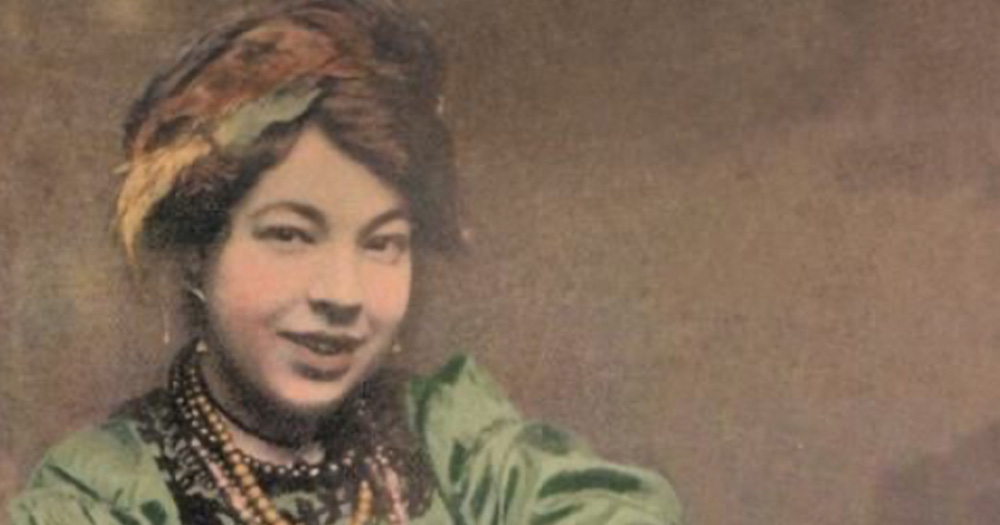Pamela Colman Smith (1878–1951) was a groundbreaking artist and mystic whose work in illustration, writing, and activism left a colourful and eccentric mark on both the artistic and occult communities. Though her name is now closely associated with the famous Rider-Waite-Smith Tarot Deck, she led a rich life devoted to the creative and mystical worlds, all while navigating the exclusionary attitudes towards female talent in her time.
Born in London and raised between England, Jamaica, and New York, Colman Smith became deeply connected to female-identified spaces and communities. She never married or entered long-term relationships with men, and many of her close connections were with women, including her long-time companion, Nora Lake, with whom she lived for at least 20 years. While the nature of that relationship remains unknown, Colman Smith’s focus on female empowerment and independence is clear.
Beyond her artistic work, she championed women’s suffrage, creating posters and cartoons for the Suffrage Atelier, a group of political artists.

She also founded The Green Sheaf, a magazine dedicated to women’s writing and folklore. Despite her contributions, Colman Smith lived the latter part of her life in financial hardship, yet her legacy endures as an artist who was well ahead of her time.
Her career was multifaceted. An accomplished illustrator, Colman Smith created over 20 books, including The Illustrated Verses of William Butler Yeats (1898). She also published her own works, Annancy Stories and Widdicombe Fair, and co-edited the short-lived periodical A Broad Sheet, alongside Jack Yeats, brother of William Butler Yeats.
It was through Yeats that she became connected to the influential Hermetic Order of the Golden Dawn, an occult society dedicated to metaphysical study, where she met Arthur Edward Waite. Waite later invited her to design the now-iconic tarot deck, which, while bearing her distinctive style, was originally credited only to Waite and the publisher, William Rider.
Colman Smith received a small, flat sum for her design of the tarot deck and no royalties. In a letter to Alfred Stieglitz, she describes the commission as “a big task for a very small payment”.
Though Colman Smith’s tarot illustrations have since gained global recognition, she received little financial or professional credit during her lifetime. Her name was omitted from the deck for decades, known only as the Rider-Waite Tarot. It wasn’t until recent years that her contributions were properly acknowledged, and the deck is now called the Waite-Smith Tarot. Pamela Colman Smith’s monogram, a snake entwined around her initials, can be found on the cards, a subtle assertion of her authorship over the modern tarot deck.
View this post on Instagram
© 2024 GCN (Gay Community News). All rights reserved.
Support GCN
GCN is a free, vital resource for Ireland’s LGBTQ+ community since 1988.
GCN is a trading name of National LGBT Federation CLG, a registered charity - Charity Number: 20034580.
GCN relies on the generous support of the community and allies to sustain the crucial work that we do. Producing GCN is costly, and, in an industry which has been hugely impacted by rising costs, we need your support to help sustain and grow this vital resource.
Supporting GCN for as little as €1.99 per month will help us continue our work as Ireland’s free, independent LGBTQ+ media.

comments. Please sign in to comment.